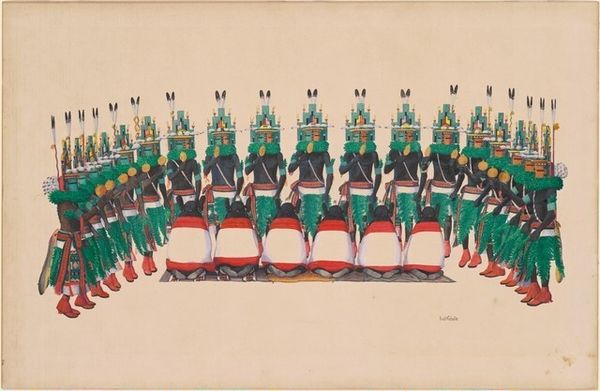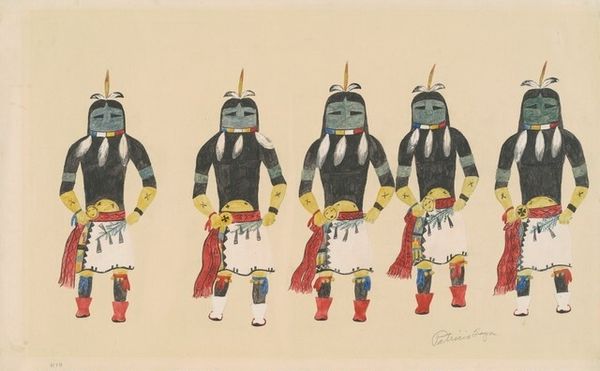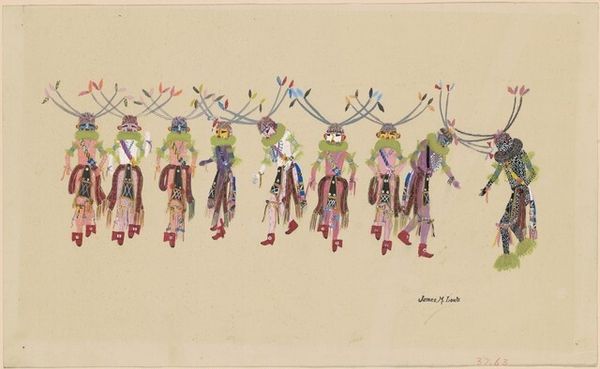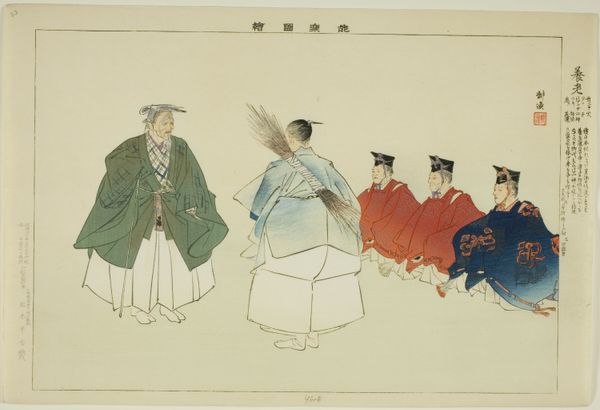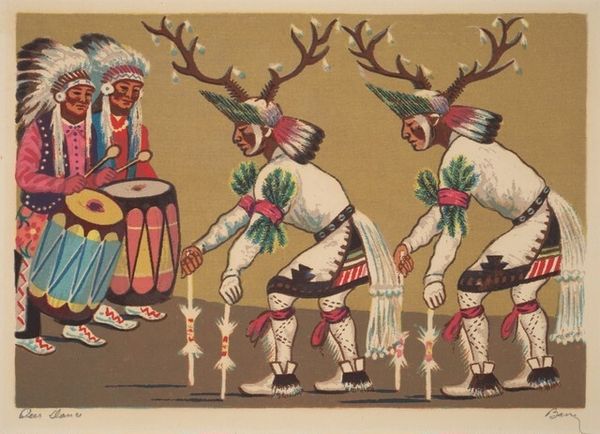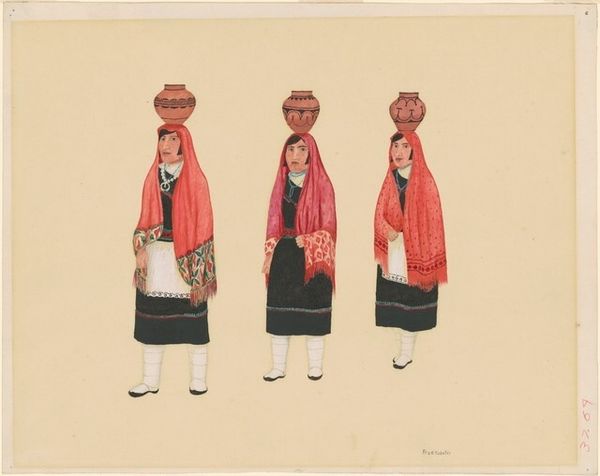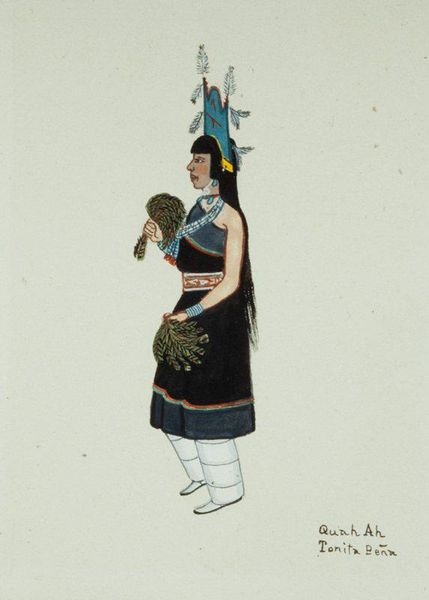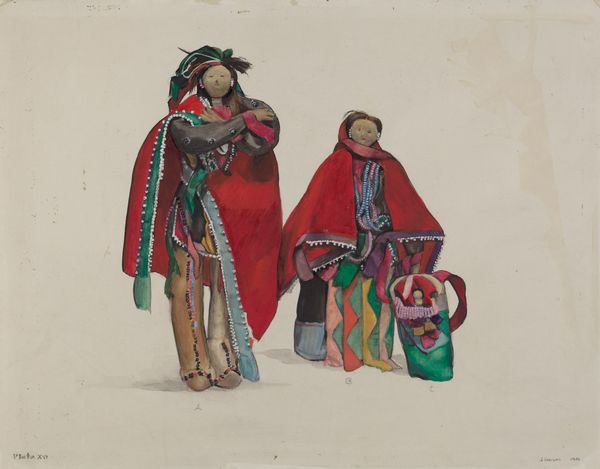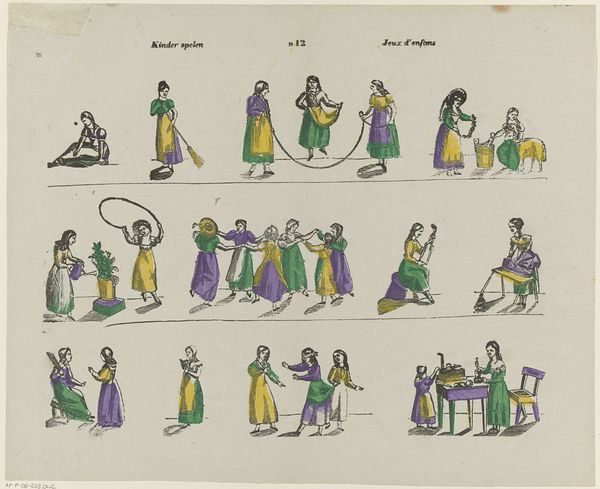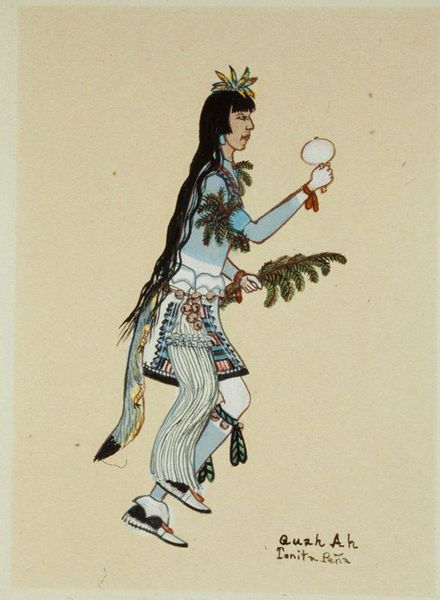
painting, gouache, paper
#
narrative-art
#
painting
#
gouache
#
paper
#
flat colour
#
cultural celebration
#
indigenous-americas
Dimensions: sheet: 35.56 × 55.88 cm (14 × 22 in.)
Copyright: National Gallery of Art: CC0 1.0
Editor: We’re looking at "Hopi Corn Dance," an acrylic and ink drawing from around 1935 by Tonita Peña. The figures, lines of dancers really, feel both rhythmic and reverent. What do you see in this piece? Curator: I see a powerful assertion of Indigenous identity and cultural survival. Peña, as a Pueblo woman, is not simply depicting a dance, she's reclaiming representation. Consider the historical context. This was a period when Indigenous cultural practices were under immense pressure, often outright banned. How might depicting this dance have been an act of resistance? Editor: It feels like showing the world something sacred that colonizers wanted to erase. A visual act of defiance, almost? Curator: Precisely. The flatness, what some might call "naive" style, also disrupts Western art historical narratives that privilege realism and perspective. The evenhanded attention that the artist employs helps reveal the intricacies of their culture, and therefore asserts authority on her people. Do you notice how the gender roles are displayed? What can we observe about men's and women's involvement in cultural life in the community? Editor: Yes, it appears there are more women involved than men; most of the rows are composed of women while only a few individuals on the right side of the frame represent the men's dancing role. Is there something significant about that placement? Curator: The rows seem separate and gendered; men and women take separate places, with very few male counterparts. Looking closer, does the artist draw the men and women any differently in stature? Is there one with a leadership presence, in terms of how they were posed in this medium? Editor: I do notice one figure wearing something like a crown and holding something that looks like an instrument. But even he looks small compared to all the others. Curator: And so Peña subverts the power structure not just by representing her community, but by flattening hierarchies within it, literally, by rendering them with this level of detail. These details show how cultural memory is a profound act of political intervention. It resists erasure. Editor: I never thought about it that way, seeing it not just as a record but as a statement. Curator: Exactly! Understanding the nuances enriches the work by so much.
Comments
No comments
Be the first to comment and join the conversation on the ultimate creative platform.
